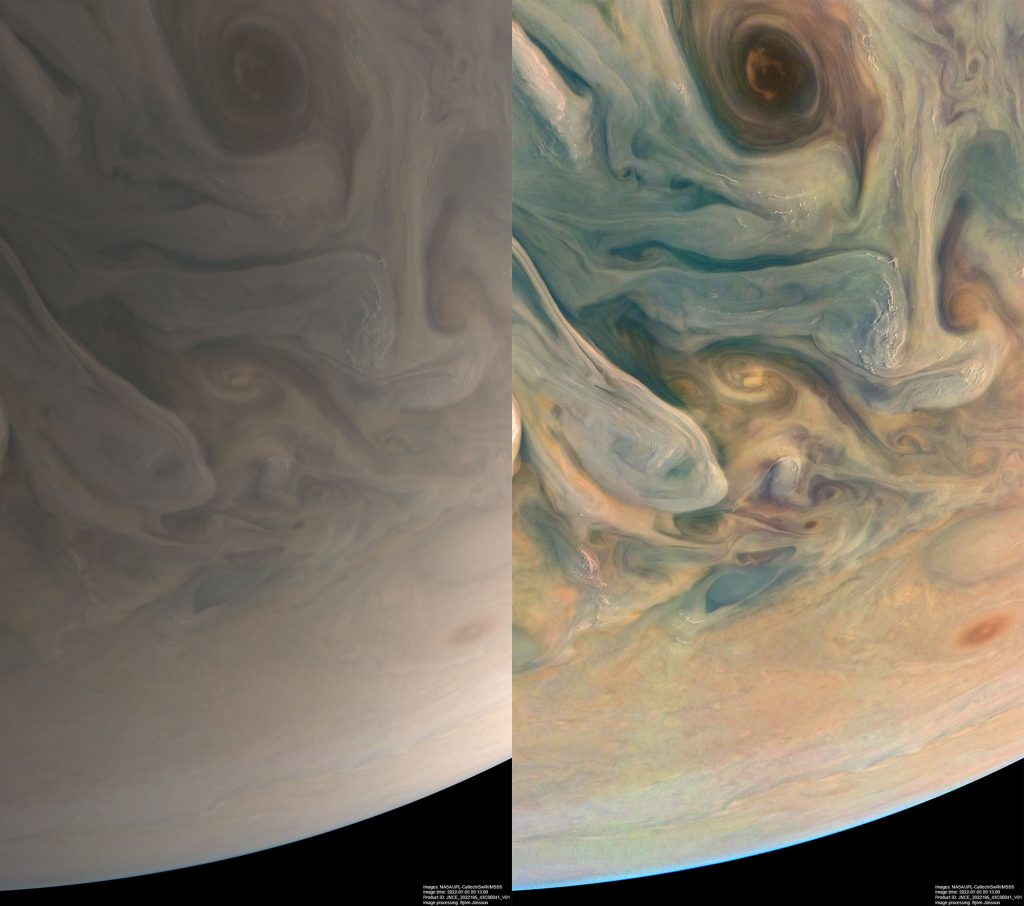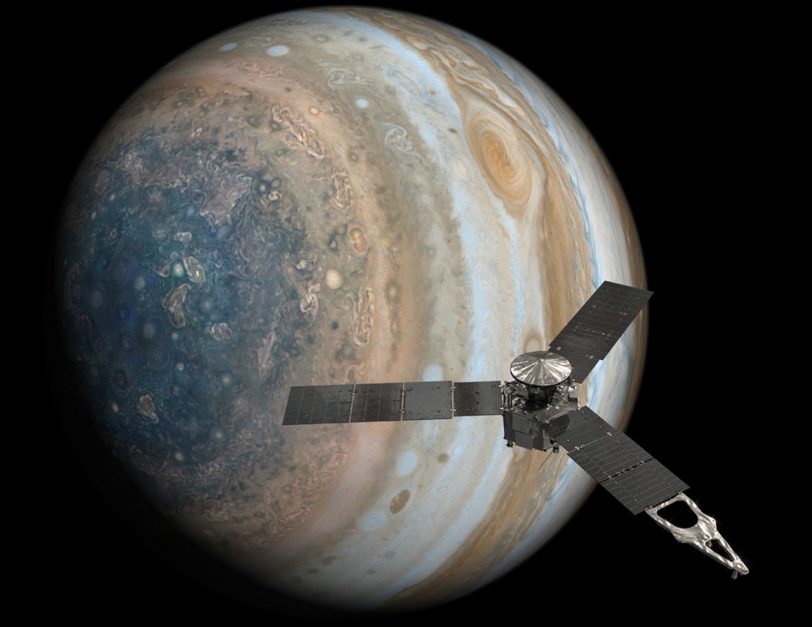On July 5, 2022, NASA’s Juno spacecraft completed its 43rd close flyby of Jupiter, observing the complex colors and structure of the giant planet’s clouds.
Björn Jónsson, a citizen scientist, created these two images using raw data from the JunoCam instrument aboard the spacecraft. Juno was about 3,300 miles (5,300 kilometers) above Jupiter’s cloud tops at a latitude of about 50 degrees when the raw image was taken. The north is up. The spacecraft was traveling at approximately 130,000 mph (209,000 kilometers per hour) relative to the planet at the time.

The first image (on the left) was processed to portray the colors that the human eye would see from Juno’s vantage point. The second image (right) was created using the same raw data, but Jónsson digitally processed it to increase color saturation and contrast, sharpen small-scale features, and reduce compression artifacts and noise that are common in raw images. This clearly reveals some of the most intriguing aspects of Jupiter’s atmosphere, such as color variation caused by differences in chemical composition, the three-dimensional nature of Jupiter’s swirling vortices, and the small, bright “pop-up” clouds that form in the upper atmosphere.
JunoCam’s raw images are available for the public to peruse and process into image products at https://missionjuno.swri.edu/junocam/processing. More information about NASA citizen science can be found at https://science.nasa.gov/citizenscience and https://www.nasa.gov/solve/opportunities/citizenscience.
More information about Juno is at https://www.nasa.gov/juno and https://missionjuno.swri.edu. For more about this finding and other science results, see https://www.missionjuno.swri.edu/science-findings.
READ MORE: James Webb Turns Its Gaze on Jupiter, And The View Is Simply Spectacular


